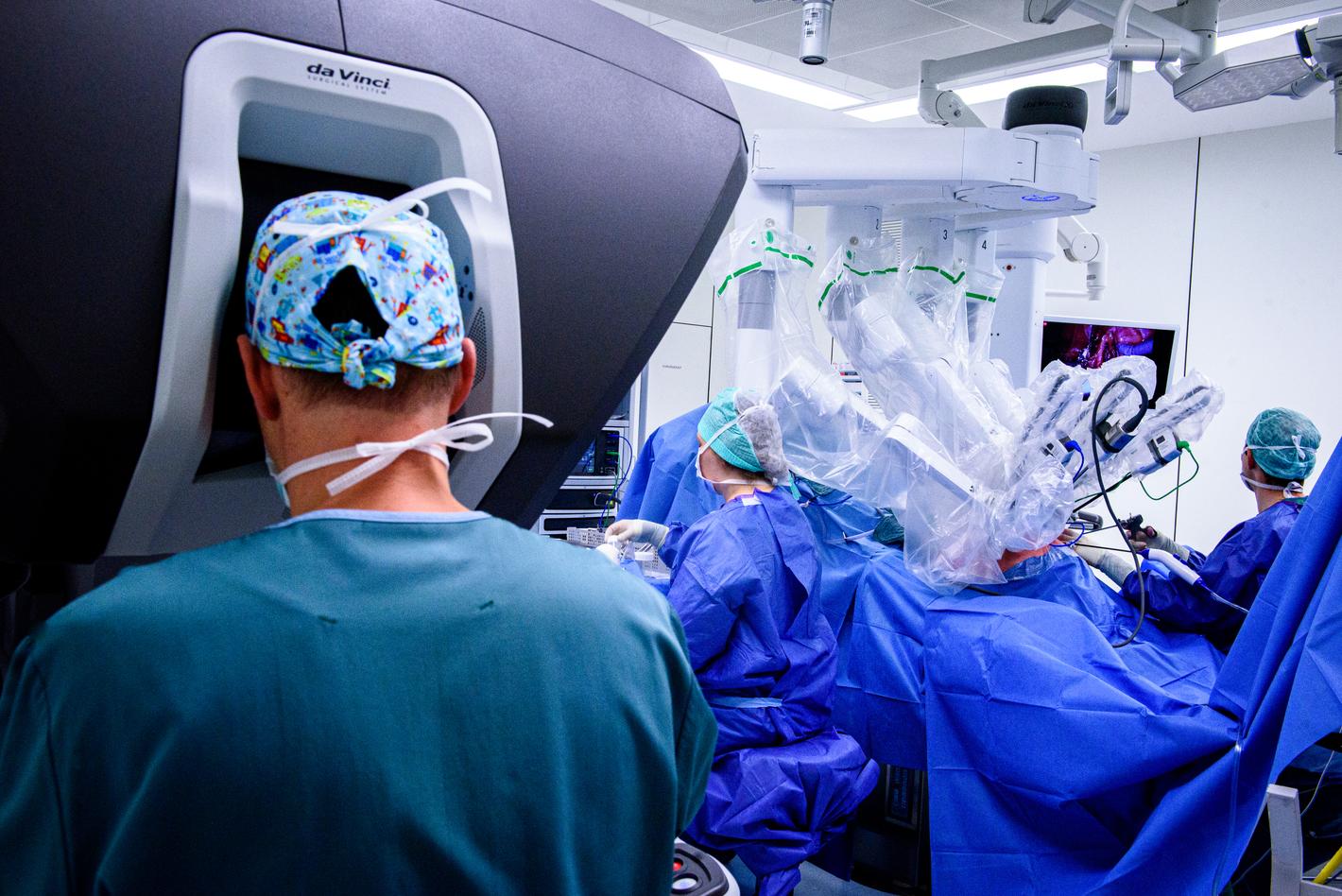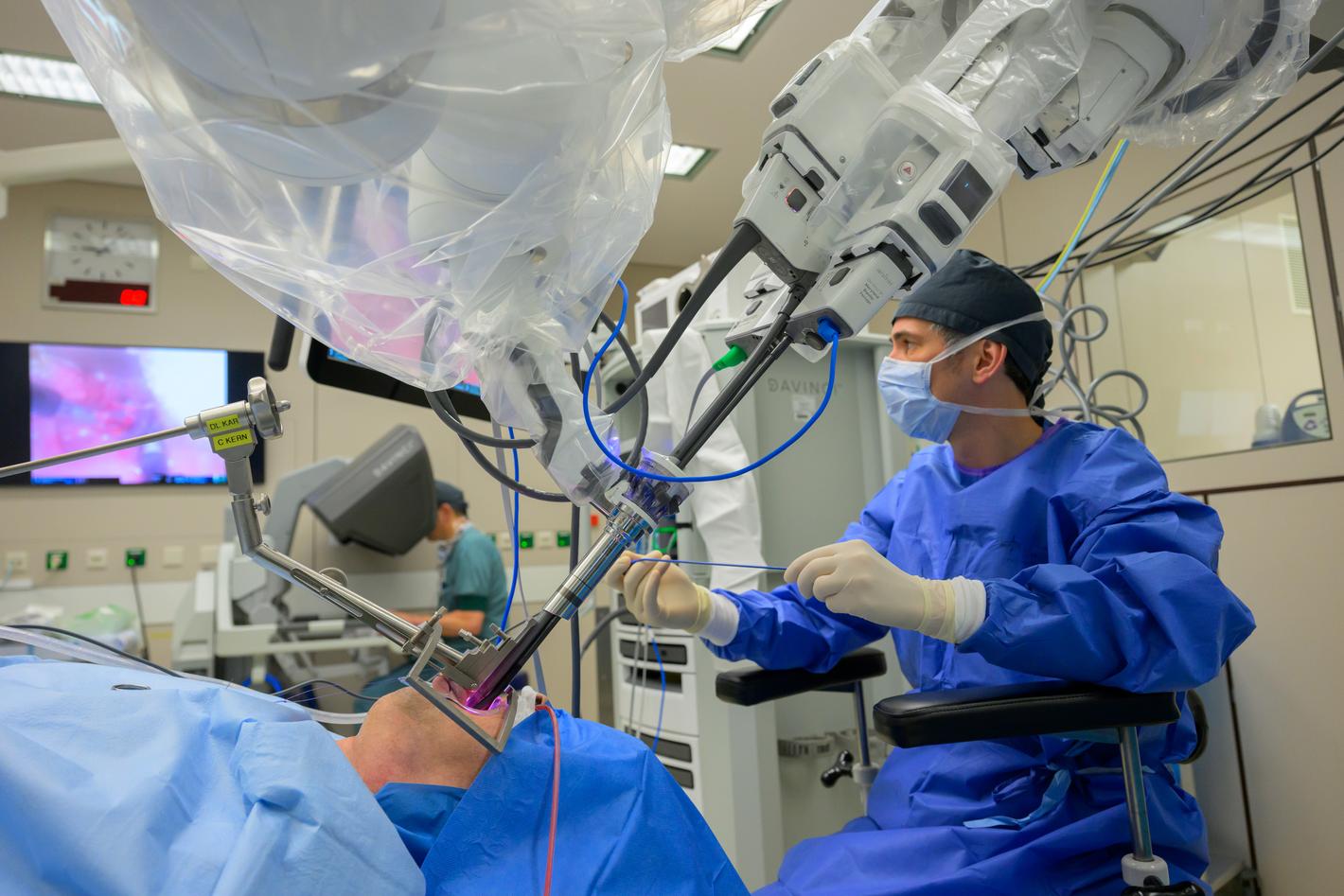At the start of robotic surgery in 2007, UZ Leuven performed 200 procedures a year, in 2023 there were 1.200 surgical procedures with a robot at UZ Leuven. The medical demand for robotic procedures increases, which made the hospital decide to invest heavily in the newest technology. UZ Leuven just purchased four additional surgical robots, including one innovative single-armed robot. With a total of six robots, one of which being used at AZ Diest, just about all surgical departments at UZ Leuven will now be able to work with the robot. The new robots will be used for urology, otorhinolaryngology, head and neck surgery, gynaecology, abdominal surgery, cardiac surgery and thoracic surgery. The robot will also be used more frequently for plastic and reconstructive surgery.
It is our task as a university hospital to scientifically assess robot technology and to examine for which procedures the new, but also expensive, technology provides an actual added value. prof. dr. Wouter Everaerts
prof. dr. Wouter Everaerts
Yet the university hospital also wants to raise a critical voice. The high cost associated with robotic surgery, which can be €1,000 to €3,000 higher than for conventional surgery, requires a careful selection of which procedures can or cannot be done with the robot. At this point, robotic surgery is not yet reimbursed, with the exception of prostate removal. The hospital has to pay the costs. Comparative studies into recovery time, cure rate and cost-benefit analysis of robotic surgery versus conventional surgery are necessary.
Complex procedures
Robotic surgery uses the same principles as keyhole surgery: the procedure is no longer done with a large incision in the body, but via small cuts of 5 to 12 millimetres. In robotic surgery, the surgeon controls a robot with a console, allowing him to make very precise movements. Moreover, the specialised camera gives the surgeon a razor-sharp 3D image of the surgical field.
For quite a number of disorders, robot-assisted surgery can offer advantages for the patient. Thanks to the robot, a lot of complex procedures can be performed via keyhole surgery, allowing patients to have less blood loss, shorter hospital stays and quicker recoveries. For example for prostate removals at UZ Leuven, a patient can go home within 24 hours after a robotic procedure, whereas previously he would have had to stay in the hospital for days. Patients receiving a coronary bypass via robotic surgery, have to stay less long on the intensive care ward, had less blood loss and less complication than in the case of conventional surgery.

The most commonly performed robot-assisted procedure today is the radical prostate removal, which at UZ Leuven is done almost exclusively with the robot. Other commonly performed robotic surgeries include removal of kidney tumours, bladder removals, uterus procedures, abdominal wall procedures, obesity surgery, removal of lung tumours, throat tumours, tumours in the pancreas, liver, stomach and intestines and cardias bypasses.
Innovative single-arm robot
One of the new robots at UZ Leuven is the so-called single port-robot of single-armed robot, which has only been available in Europe since January 2024. The conventional robots have four arms to work with and make four holes to perform surgery. The single port has one arm and can perform procedures via one small opening, which is ideal for surgery through natural openings such as the mouth or anus. UZ Leuven was the first hospital in Belgium to perform transoral surgery (through the mouth) with the single-arm robot for a tumour in the pharynx in early November.

Prof. dr. Wouter Everaerts, urologist and chairman of the working group for robotic surgery at UZ Leuven: “We're happy we can start working with the single-arm robot. This can open up interesting possibilities for tumours in the pharynx or rectal tumours, where you can operate via the natural access. In urology we are now also using this robot for removing prostate and kidney tumours, but it is still unclear whether the single-arm robot provides actual benefits for the patient in comparison to the four-armed robot. We want to test those technological innovations and compare them scientifically. It is our task as a university hospital to assess robotic technology and to examine for which procedures the new but also expensive technology provides an actual added value.”
Training centre
As a university training hospital UZ Leuven teach all future surgeons, including urologist and gynaecologists, how to work with the robot during their training. After the first theoretical sessions, trainee surgeons are given practical training. In the process, they learn how the robot works by practising on training models and virtual simulators before working with real patients. The four armed robot's have an operating system for two persons. This gives the experienced surgeon a 100% control over the course of the procedure, while a trainee surgeon performs a small part of the procedure under supervision. In time the trainiee surgeon learns to perform more complex steps.
Trainee surgeons are given the opportunity thus get the chance to learn about a wide range of robotic surgery, including more complex disorders and multidisciplinary procedures. Prostate surgery with the robot are nowadays standard procedure in hospitals that have a robot, but in the field of cardiac surgery, plastic surgery and nose-throat-ear surgery, UZ Leuven is a forerunner to perform robotic procedures. The robotic centre works closely together with the engineers at KU Leuven. They have developed robotic applications for e.g. ophthalmology, gynaecology and otorhinolaryngology. In this way, civil engineering students also regularly come to watch in the operating theatre.